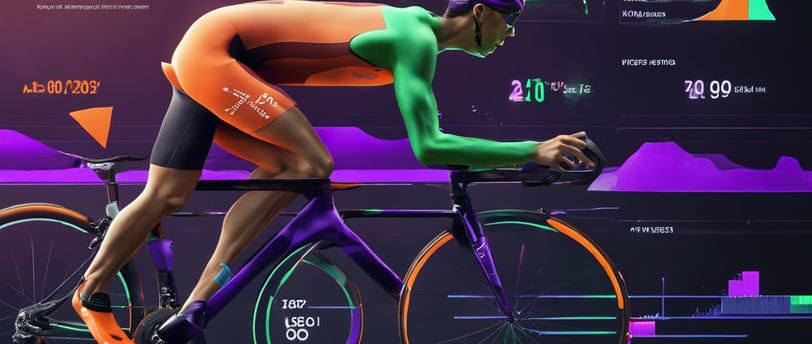Empowering Triathlons Through Data: The Role of AI Analytics in Performance Tracking
Explore how AI analytics empower triathlons by enhancing performance tracking. Dive into the future of dynamic data analysis, where athletes gain insights to improve training and achieve new heights of success.


Triathlon—the ultimate test of endurance, speed, and strategy—has always challenged athletes to push beyond their limits. But what if your toughest competitor isn’t another athlete, but the very technology that’s reshaping how races are won? Enter artificial intelligence (AI), a game-changer that’s revolutionizing race preparation and strategy.
The Rise of AI in Triathlon
AI isn’t just a buzzword; it’s a transformative force that’s impacting every corner of the sports world, and triathlon is no exception. By leveraging vast amounts of data and advanced algorithms, AI offers athletes insights that were once unimaginable. From optimizing training schedules to tailoring race-day strategies, AI is becoming the secret weapon for both amateur and elite triathletes.
Predictive Analytics: A New Era of Training
One of AI’s most powerful contributions is its ability to analyze historical performance data and predict outcomes. Imagine knowing the exact pace you should maintain during the bike leg based on previous races, weather conditions, and even your sleep patterns. Tools powered by AI, like TrainingPeaks and Whoop, analyze metrics such as heart rate variability, power output, and recovery cycles to craft hyper-personalized training plans. These plans don’t just prepare you for race day—they ensure you peak at the right time.
Real-Time Data: Smarter Strategies on Race Day
Gone are the days of relying solely on intuition during a race. Wearable devices equipped with AI capabilities now offer real-time insights into your performance. Smartwatches and bike computers analyze live metrics, such as cadence, hydration levels, and caloric burn, providing on-the-spot recommendations. Is your cadence dropping too low on a climb? AI can suggest adjustments instantly, helping you conserve energy for the run.
Course Insights: Outsmarting the Competition
AI doesn’t just focus on the athlete; it also deciphers the racecourse. Platforms like Best Bike Split use machine learning to map out optimal pacing strategies based on course elevation, wind conditions, and other variables. For triathletes tackling iconic races like Kona, these insights can mean the difference between a podium finish and a personal best.
Mental Game: AI as Your Mind Coach
Triathlon success isn’t just physical; it’s deeply mental. AI tools like Headspace and Calm are incorporating biofeedback to help athletes master their focus and stay calm under pressure. Some apps even use AI to simulate race-day scenarios, helping you rehearse mentally before you hit the starting line.
The Future of AI in Triathlon
As AI continues to evolve, its integration into triathlon is only set to deepen. Think AI-powered goggles that guide your swim in open water or virtual reality (VR) simulations for course recon. AI may even level the playing field, offering beginners access to elite-level training strategies at a fraction of the cost.
A Transformative Partnership
While AI provides incredible advantages, it’s important to remember that it’s a tool, not a replacement for grit, determination, and human ingenuity. The beauty of triathlon lies in the interplay between the human spirit and technological innovation. Together, they’re creating a future where athletes don’t just compete harder—they compete smarter.
Conclusion
AI is not just transforming triathlon; it’s redefining what’s possible. From training smarter to racing more strategically, technology is empowering athletes to reach new heights. So, as you prepare for your next race, ask yourself: Are you ready to embrace the future of triathlon?


